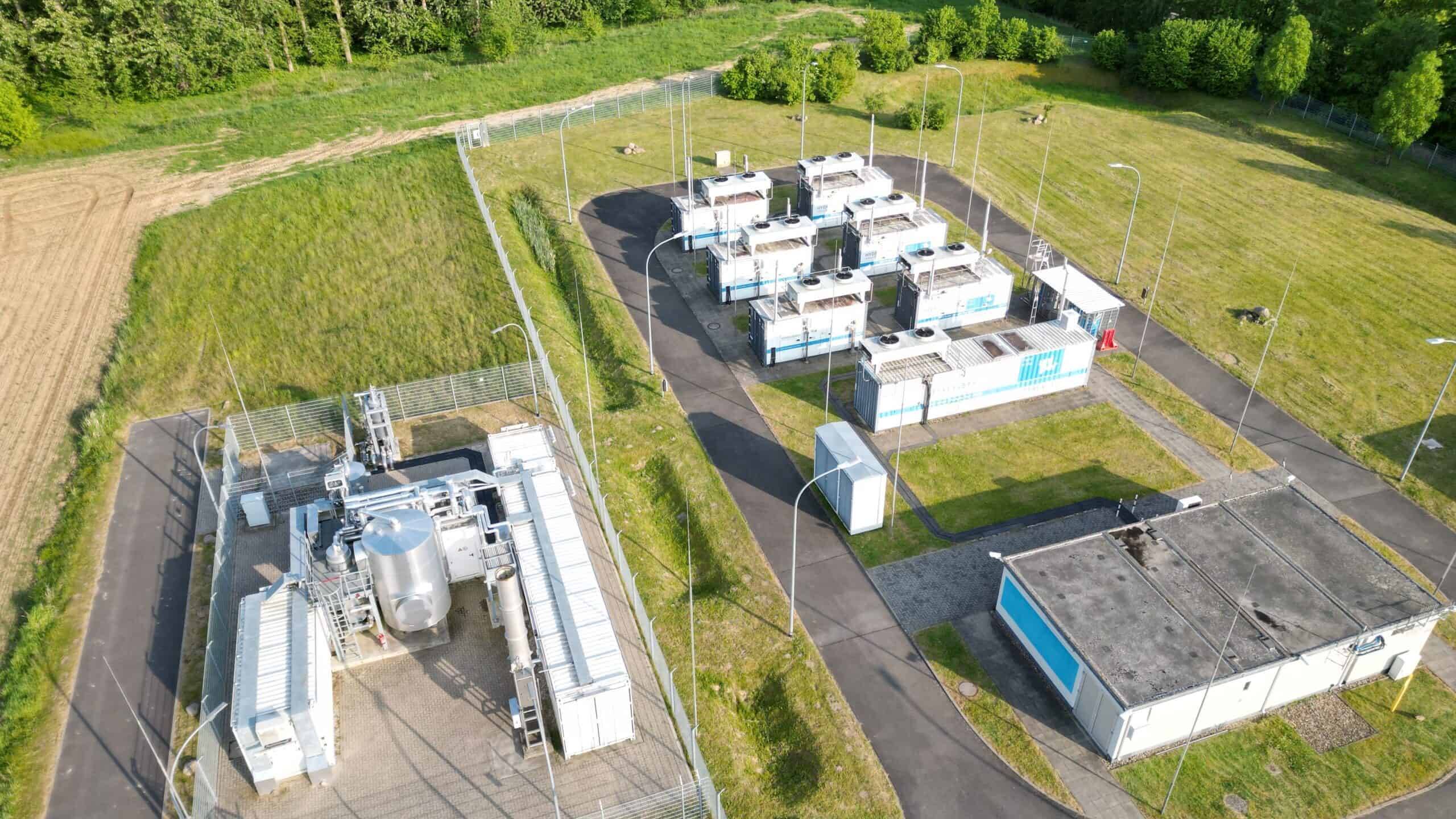In our interview, ETH Professor Tobias Schmidt says climate change is no longer an abstract threat. However, innovation is moving fast and provides ways to mitigate it.

Director, Institute of Science, Technology and Policy, ETH Zurich
Tobias is the head of ETH Zurich’s Energy and Technology Policy group and is the director of the Institute of Science, Technology and Policy. In his research, he analyzes the interaction of energy policy and its underlying politics with technological change in the energy sector.
Tobias holds a Bachelor of Science and Dipl. Ing. in electrical engineering from the Technical University Munich and a PhD from ETH Zurich in management, technology, and economics. He did a PostDoc at ETH, was a visiting scholar at Stanford and Princeton universities, and consulted for the United Nations Development Programme.
Tobias is an elected member of the Swiss Academy of Engineering Sciences and is also part of Verve Ventures’ investor network.
Why is the energy transition important?
Energy consumption is the most important cause of climate change; it contributes to 80% of CO2 emissions. Therefore, to limit global warming, we must transition from fossil fuels to renewable energy. Furthermore, we must accelerate the development of new carbon capture and storage technologies.
What role does finance play in the energy transition?
It is vital because the energy transition hinges on installing tangible assets and expanding the energy system. Historically, we have invested hundreds of billions annually in the energy sector. However, moving away from the existing, well-established value chains of fossil fuels also means building up new value chains in wind and photovoltaics and new technologies still in their infancy, such as electrolysis and direct air capture. We need to move from investing billions to trillions per year, a move that is also called for by international agencies.
Who will pay for the trillions needed to finance the energy transition?
It is easier for developed countries with bigger budgets than for emerging countries because the energy demand is rising rapidly in emerging countries. It is quintessential to mobilize private capital as well. Institutional investors own more than 70 trillion. Yet, only a little has flown into the energy transition, though it is starting to improve. If you think about what money is used for, namely building long-lived assets with stable cash flows, this is a good fit for institutional investors or corporations investing from their balance sheets. Venture capital is needed to develop new technologies and accelerate their adoption, and we need more money flowing into this asset class, too.
What can be done to accelerate the energy transition?
Researchers have a clear consensus that states must enact a mix of measures beyond a CO2 tax that makes dirty technologies pay for the environmental damage they cause. We also need to support clean technologies to make them competitive. The rapid price decline of photovoltaic panels was helped by subsidies. They are necessary because an essential part of innovation is constantly improving existing products through learning by doing.
Speaking of the price decline of solar, it is interesting to see that every past forecast about PV growth was much too conservative. Why was that the case?
The models, especially those of the International Energy Agency, were wrong because they did not account for exponential growth or the decline of financing costs. This matters because financing costs are the most relevant factor for a solar plant but are almost irrelevant for a gas or coal plant, where fuel costs dominate the calculation. This is a central feature of the energy transition: a shift from opex to capex [from operational expenditure to capital expenditure].
And why did solar power costs decline more rapidly than other renewables?
Why some technologies learn more rapidly than others is one of the main questions of our research. There are three main reasons. First, how much design complexity does a technology entail? In the case of solar, not much at all. There aren’t many components and none move. Second, can it be mass manufactured? If yes, as with solar panels, the potential for cost reduction is high. Third, how high is the need for customization? Again, solar power is advantageous as you can use the same cell without modification on a rooftop, in the Alps, or in rural Africa. The same three points explain why, for example, wood-fired power plants have a rather flat learning curve. Their boiler layout is complex, as you need to deal with thermo and fluid dynamics. They cannot be mass manufactured and must be customized to the fuel source in different countries, ranging from spruce in Sweden to eucalyptus in South Africa.
Renewable energies are intermittent, so we need storage. Is the decade of the battery about to start?
I’d say we’re already in the middle of it. Sony commercialized the first li-ion battery in a camcorder in 1991. Since then, progress has been immense. We have been lecturing on battery technology with Vanessa Wood, at the Institute for Electronics, for a decade now, and the content and policy questions have entirely changed. In the past, we talked about how to enable price reduction; today, we talk about recycling. The learning curve has been steep, as in the case of solar. Design complexity is medium, and highly integrated mass manufacturing has become apparent. The Gigafactory is 1km long. Customization isn’t necessarily needed at the battery cell level, which is the same for different applications. The technology never needed subsidies because it is a multi-purpose technology. This enabled incremental progress and improvement.
The impact of large stationary batteries can already be observed in California, where several gigawatts of battery capacity have been installed. The demand curve, which drops as soon as solar is on, rises rapidly in the evening when the sun goes down. It’s also known as the duck curve for its shape. Since two years it gets flatter and flatter with increasing battery capacity.
We’re also seeing significant technological progress in different battery materials for various applications. Lithium titanate batteries don’t catch fire, iron phosphate batteries are cheap, nickel manganese cobalt is used for performance applications, and sodium-ion batteries could herald a post-lithium-ion phase.

Invest in Startups
As one of Europe’s most active venture capital investors, we grant qualified private investors access to top-tier European startups. With investments starting at EUR/CHF 10’000, you can build your own tailored portfolio over time and diversify across stages and sectors.
With tozero, we have invested in a startup that is active in battery recycling, so it is good to hear that this topic is top of mind. What about fuels made from solar energy such as renewable natural gas, as our portfolio company Turn2X is promoting?
It is an essential way to decarbonize the industries that are hard to decarbonize, such as steel production. In industry and transport, electrification is well underway. As batteries become cheaper, even heavy trucks will be electrified. However, some fields, such as aviation or heavy industry, remain hard to electrify, and sustainable fuels are needed for those.
A recently published report by your team estimates the cost of removing 1 tonne of CO2 from the air in the year 2050 to be between 230 and 540 US dollars. This is twice as high as previous estimates. Does this mean the magic number in direct air capture of 100 dollars per ton is out of reach?
This magic number, coined by the National Academy of Sciences, was always meant to measure the cost of a portfolio of measures, including cheaper nature-based methods such as reforestation, not just the cost of direct air capture. That being said, DAC [direct air capture] has the advantage over nature-based methods in that it is scalable, measurable, reportable, and permanent. A forest can burn.
DAC costs will not decline that fast because of its relative design complexity. Climeworks, for example, opted for modular, containerized building blocks to make their plants mass-manufacturable. Customization is needed because it matters if you have to deal with snow, like in Iceland, or sand, like in Oman. On top, the CO2 concentration in ambient air is only 420 parts per million. So, we need to move quite a bit of air to capture the CO2 molecules.
Other electrochemical DAC methods are promising but still in the lab stage. But returning to our cost estimate, a reduction to 230 dollars would still be quite significant.
There are two main market mechanisms through which projects that reduce emissions or capture and store CO2 are financed. One is called the compliance market. It is established by law and mandatory for big companies that generate a lot of emissions. Since the companies can trade their emission certificates, this is also called the Emissions Trading System, or ETS. What is its role in mitigating climate change?
There is a significant difference between the emission trading schemes worldwide. Europe’s ETS is the most advanced and largest compliance market. By the way, the Swiss and the EU’s ETS are coupled. The price signals from this market promote the reduction of emissions. For example, burning brown coal has already become largely uneconomic in Germany. However, the price the emissions producers have to pay for a ton of carbon, at the moment around 65 Euros, is still too small to enable other mitigation or even carbon removal technologies.
Most compliance markets outside of Europe are ineffective in curbing emissions. The price per ton of CO2 in China is around 5 dollars. We need high carbon prices, substantially higher than even in Europe today, to foster investment in innovation.
What about the other mechanism, the voluntary carbon markets? This is the market people and companies participate in because they want to compensate for the emissions of their flights or online purchases, for example. How relevant is it?
The difference between different voluntary carbon markets is even more stark. Research has shown that some projects financed through voluntary carbon markets are nothing more than hot air—projects that would have been done anyway or those with a counterfactual that is not measurable, such as avoided deforestation. However, stringent voluntary markets can also be essential to improving new technologies and enabling learning by doing.
Direct air capture companies depend on long-term offtake agreements for their capacity to finance new installations. Alliances of companies, such as the Next Gen CDR, that buy high-quality carbon removals from technological projects are essential for developing the field. However, in the end, voluntary carbon markets are insufficient, so we need to move compliance markets forward and increase the prices and complement them with subsidies.
Is it enough to sell your oil stocks if you care about the environment?
No, divestments aren’t very effective. There is simply still too much money to be made in fossil fuels, especially oil and gas. Even if a large part of the capital markets divested from oil and gas, which will not happen soon, the remaining investors would be happy with the returns. The more promising theory of change stipulates that we need to help new technologies replace fossil fuels.
Many agree that we must move faster and act on climate change before it is too late. However, what matters in daily life is the cost of living. Nobody wants things to become even more expensive.
Agreed, and the good news is that this is possible. When the Stern Review on the Economics of Climate Change was published in 2006, it became apparent for the first time that the costs associated with climate change are higher than the costs of mitigation. But since then, the situation has become even better: Today, the IAE says it’s worth investing in the energy transition, even without considering the cost of climate change, simply because new energy systems will be cheaper than the old ones.
This momentous shift has resulted from innovation in the last two decades. The energy transition is attractive to investors. There are so many opportunities in solar energy, the electrification of cars, heating, and other industries. Climate policy was ambitionless as long as measures were expensive. In this regard, innovation is the driver or enabler of political ambition. This is why it is worth supporting innovative startups in this field as investors. Every other form of innovation becomes irrelevant when the living conditions of large parts of humanity become threatened. Climate change is not an abstract threat anymore. So, the danger is real, but so are the solutions.
Written by
WITH US, YOU CANCO-INVEST IN DEEP TECH STARTUPS

Verve's investor network
With annual investments of EUR 60-70 mio, we belong to the top 10% most active startup investors in Europe. We therefore get you into competitive financing rounds alongside other world-class venture capital funds.
We empower you to build your individual portfolio.
More News
28.06.2023
“With climate change, we face a momentous problem”
Turn2X proposes a novel way to produce renewable natural gas. The startup recently announced its Seed financing round. In this interview, co-founder Philip Kessler talks about the first steps to reduce emissions from burning fossil gas by making green energy transportable.
11.10.2022
“The future is climate tech”
Inderpreet Wadhwa left a comfortable career in Silicon Valley to found a multibillion solar power startup in India and now supports the next generation of climate entrepreneurs to realize their ambitions.
10.10.2022
“Climate tech is resilient to economic crises”
Over $60 billion were invested in climate tech in the first half of 2021, a 210% growth in investment year-on-year. Isabella Fandrych co-founded Nucleus Capital, a venture company specializing in climate tech investment. In this interview, she tells us more about what makes climate tech a resilient investment in turbulent times and the many funding opportunities available for startups in this space.
Startups,Innovation andVenture Capital
Sign up to receive our weekly newsletter and learn about investing in technologies that are changing the world.




